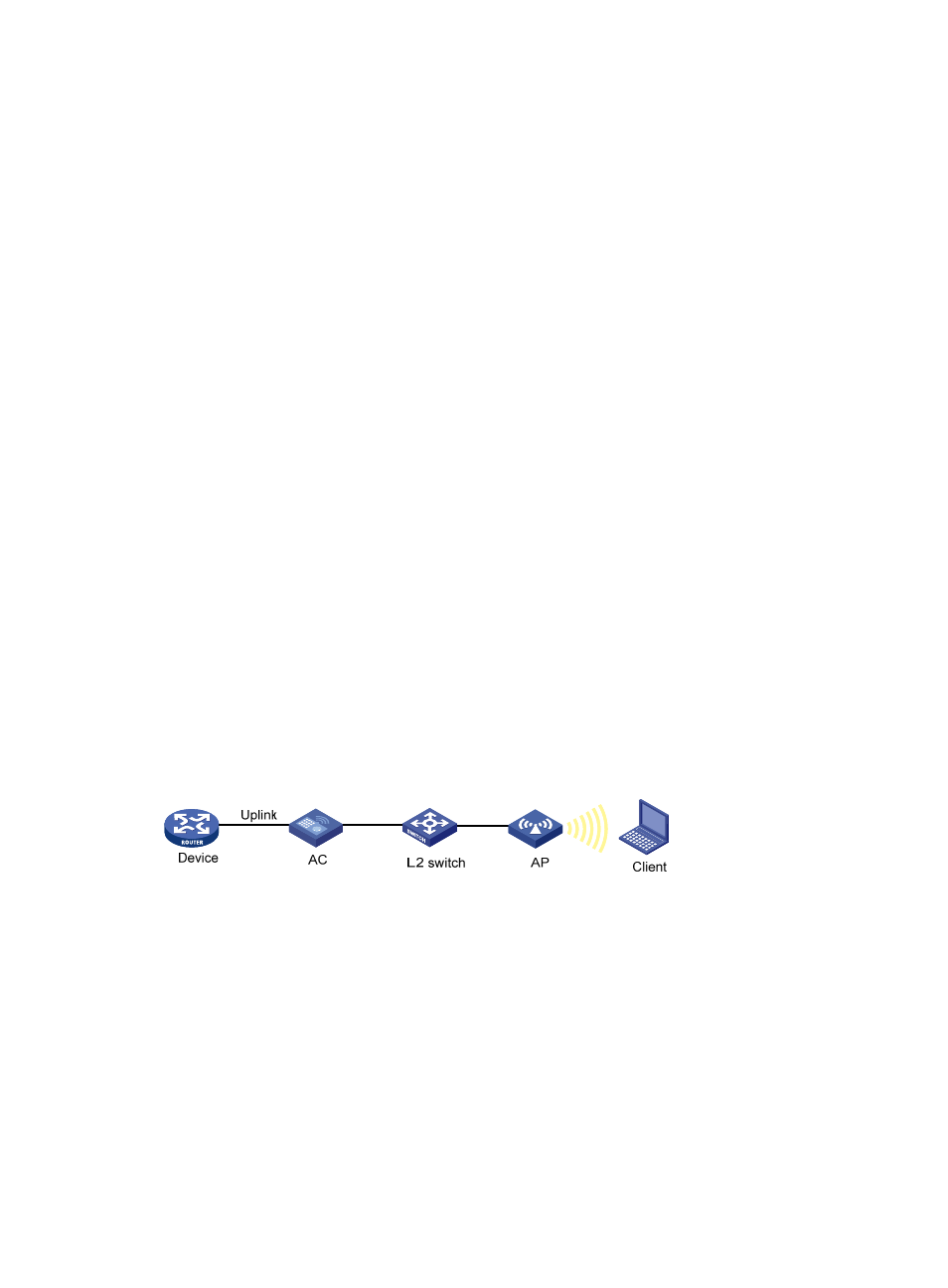Collaboration application example on an ac – H3C Technologies H3C WX3000E Series Wireless Switches User Manual
Page 45

37
•
If the tracked object functions abnormally, for example, the target interface is down or the target
network is unreachable, the state of the track entry is Negative.
•
If the detection result is not valid, for example, the NQA test group that is associated with the track
entry does not exist, the state of the track entry is Invalid.
The detection modules that can be associated with the track module include:
•
NQA
•
Interface management module
Collaboration between the track module and an application module
After being associated with an application module, when the status of the track entry changes, the track
module notifies the application module, which then takes proper actions.
The application modules that can be associated with the track module include:
•
Virtual Router Redundancy Protocol (VRRP)
•
Static routing
•
WLAN uplink detection
In some cases, when the status of the track entry changes, if the track module notifies the application
modules immediately, communication may be interrupted because routes cannot be recovered in time.
For example, the master in a VRRP group monitors the uplink interface through the track module. When
the uplink interface fails, the track module notifies the master to reduce its priority so that a backup with
a higher priority can preempt as the master to forward packets. When the uplink interface recovers, if the
track module notifies the original master to restore its priority immediately, the master will forward
packets immediately; however, the uplink route has not been recovered yet, which may result in packet
forwarding failure. Then configure the track module to notify the application modules of the track entry
status change after a specific delay time.
Collaboration application example on an AC
This example shows how to implement collaboration by monitoring the uplink of the AC.
Figure 17 Network diagram
Configure uplink detection on the AC. If the uplink fails, the AC disables the radio on the AP. If the uplink
recovers, the AC enables the radio on the AP. For this purpose, configure collaboration between the
NQA, track, and uplink detection:
1.
Configure an NQA test group to check the reachability of the Device.
2.
Create a track entry and associate it with the NQA test group. When the Device is reachable, the
track entry is in Positive state. When the Device becomes unreachable, the track entry is in
Negative state.
3.
Associate the track entry with the WLAN uplink detection feature. When the associated track entry
turns to the Negative state, the uplink detection feature disables the radio on the AP so that wireless
clients will not associate with the AP. When the track entry changes to the Positive state, the uplink
detection feature enables the radio on the AP so that wireless clients can associate with the AP.
- H3C WX5500E Series Access Controllers H3C WX3500E Series Access Controllers H3C WX2500E Series Access Controllers H3C WX6000 Series Access Controllers H3C WX5000 Series Access Controllers H3C LSWM1WCM10 Access Controller Module H3C LSUM3WCMD0 Access Controller Module H3C LSUM1WCME0 Access Controller Module H3C LSWM1WCM20 Access Controller Module H3C LSQM1WCMB0 Access Controller Module H3C LSRM1WCM2A1 Access Controller Module H3C LSBM1WCM2A0 Access Controller Module
